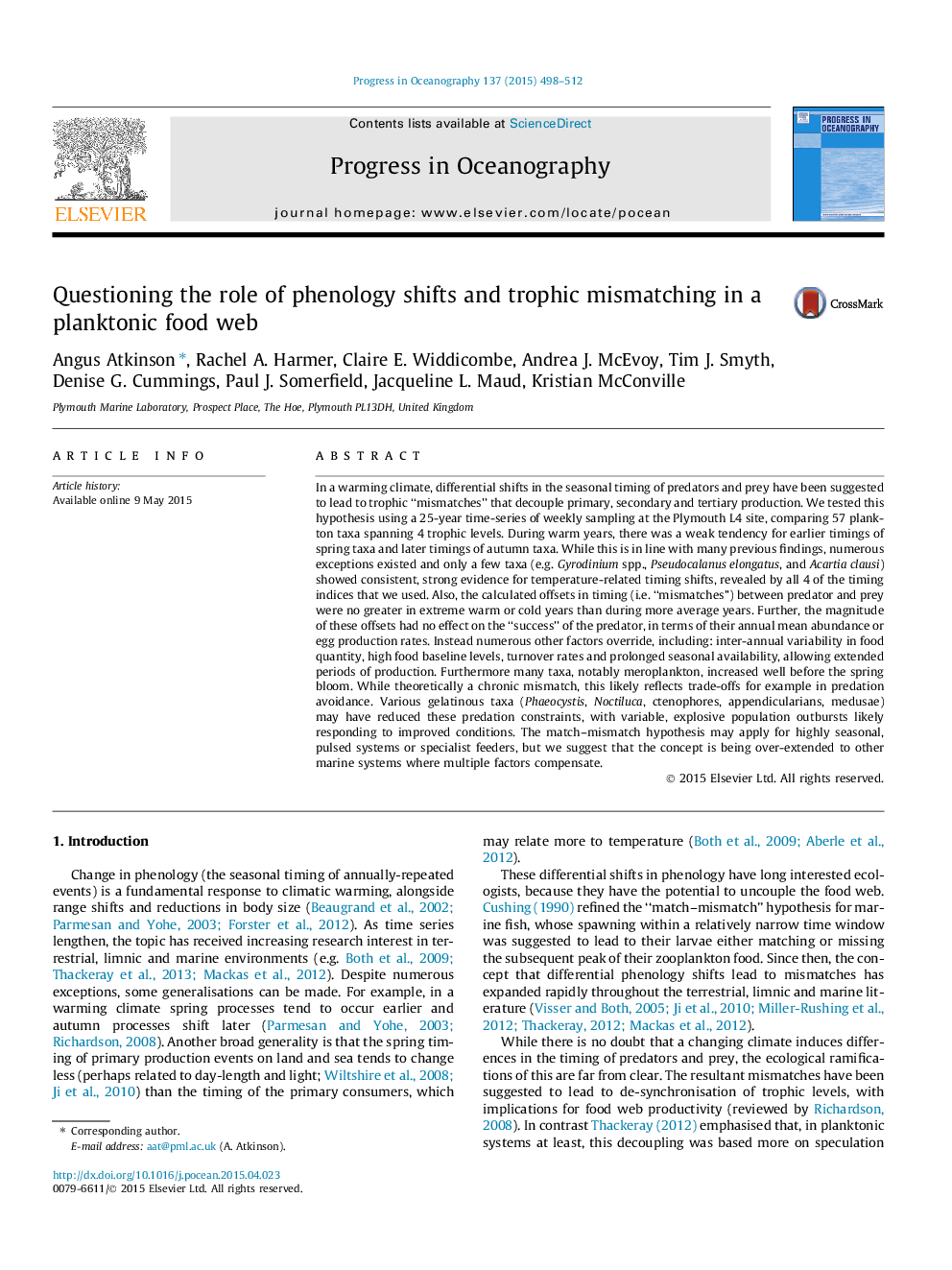| کد مقاله | کد نشریه | سال انتشار | مقاله انگلیسی | نسخه تمام متن |
|---|---|---|---|---|
| 4553036 | 1328856 | 2015 | 15 صفحه PDF | دانلود رایگان |
• We used a 25-year time series to examine the effects of phenology shifts in the plankton.
• In warm years spring species tended to appear earlier and autumn species later.
• However “mismatch” in timing between trophic levels was unrelated to temperature.
• Species abundance/production was also unrelated to degree of offset with food.
• This shelf sea system is resilient to differential phenology shifts between trophic levels.
In a warming climate, differential shifts in the seasonal timing of predators and prey have been suggested to lead to trophic “mismatches” that decouple primary, secondary and tertiary production. We tested this hypothesis using a 25-year time-series of weekly sampling at the Plymouth L4 site, comparing 57 plankton taxa spanning 4 trophic levels. During warm years, there was a weak tendency for earlier timings of spring taxa and later timings of autumn taxa. While this is in line with many previous findings, numerous exceptions existed and only a few taxa (e.g. Gyrodinium spp., Pseudocalanus elongatus, and Acartia clausi) showed consistent, strong evidence for temperature-related timing shifts, revealed by all 4 of the timing indices that we used. Also, the calculated offsets in timing (i.e. “mismatches”) between predator and prey were no greater in extreme warm or cold years than during more average years. Further, the magnitude of these offsets had no effect on the “success” of the predator, in terms of their annual mean abundance or egg production rates. Instead numerous other factors override, including: inter-annual variability in food quantity, high food baseline levels, turnover rates and prolonged seasonal availability, allowing extended periods of production. Furthermore many taxa, notably meroplankton, increased well before the spring bloom. While theoretically a chronic mismatch, this likely reflects trade-offs for example in predation avoidance. Various gelatinous taxa (Phaeocystis, Noctiluca, ctenophores, appendicularians, medusae) may have reduced these predation constraints, with variable, explosive population outbursts likely responding to improved conditions. The match–mismatch hypothesis may apply for highly seasonal, pulsed systems or specialist feeders, but we suggest that the concept is being over-extended to other marine systems where multiple factors compensate.
Journal: Progress in Oceanography - Volume 137, Part B, September 2015, Pages 498–512
